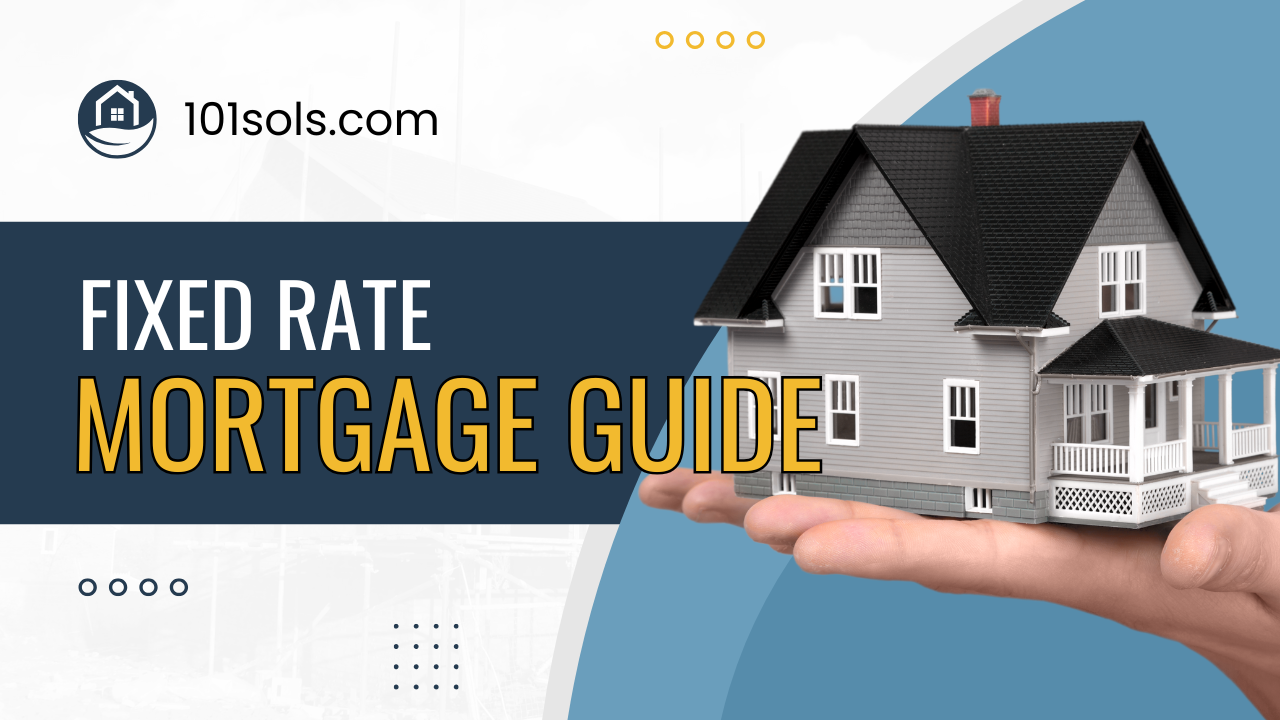I can certainly revise the article content to significantly reduce the use of passive voice and incorporate more transition words, making it clearer and more engaging for your audience at 101sols.com.
📝 Revised Mortgage Calculator Article Content (Active Voice & Enhanced Transitions)
🏡 Mortgage Calculator: Estimate Your True Monthly Homeownership Costs (US Focus)
The Mortgage Calculator helps you estimate your monthly payment along with other financial costs associated with a mortgage. You have options to include extra payments or annual percentage increases for common mortgage-related expenses. The calculator is mainly intended for U.S. residents.
What is a Mortgage and How Does it Work?
A mortgage is a loan secured by property, usually real estate. Lenders define it as the money you borrow to pay for real estate. Simply put, the lender helps the buyer pay the seller of a house, and the buyer agrees to repay the money borrowed over a period of time, usually 15 or 30 years in the U.S.
Consequently, you make a payment from the buyer to the lender each month. This monthly payment includes two portions: the principal, which is the original amount borrowed, and the interest, which is the cost you pay the lender for using the money. Furthermore, an escrow account may be involved to cover the cost of property taxes and insurance. Crucially, the buyer does not become the full owner of the mortgaged property until they make the last monthly payment. In fact, the conventional 30-year fixed-interest loan remains the most common mortgage loan in the U.S., representing $70\%$ to $90\%$ of all mortgages. Therefore, mortgages allow most people in the U.S. to own homes.
Mortgage Calculator Components
A mortgage usually includes the following key components. As a result, these also form the basic components of a mortgage calculator.
- Loan amount: This is the amount you borrow from a lender or bank. Specifically, in a mortgage, this amount equals the purchase price minus any down payment. Generally, the maximum loan amount you can borrow correlates with your household income or affordability. To estimate an affordable amount, please use our House Affordability Calculator.
- Down payment: This is the upfront payment of the purchase, usually a percentage of the total price. In other words, the borrower covers this portion of the purchase price. Typically, mortgage lenders want the borrower to put $20\%$ or more down. However, in some cases, borrowers might put down as low as $3\%$. If you make a down payment of less than $20\%$, the lender will require you to pay private mortgage insurance (PMI). Borrowers need to maintain this insurance until the loan’s remaining principal drops below $80\%$ of the home’s original purchase price. A good rule-of-thumb is that the higher the down payment, the more favorable your interest rate, and the more likely the lender will approve the loan.
- Loan term: This is the amount of time over which you must repay the loan in full. Most fixed-rate mortgages run for 15, 20, or 30-year terms. Furthermore, a shorter period, such as 15 or 20 years, typically includes a lower interest rate.
- Interest rate: This is the percentage of the loan the lender charges as a cost of borrowing. Mortgages can charge either fixed-rate mortgages (FRM) or adjustable-rate mortgages (ARM). As the name implies, interest rates stay the same for the term of the FRM loan. (The calculator above calculates fixed rates only.) Conversely, for ARMs, interest rates are generally fixed for a period, after which they will periodically adjust based on market indices. ARMs transfer part of the risk to borrowers. Consequently, the initial interest rates are normally $0.5\%$ to $2\%$ lower than FRMs with the same loan term. You normally express mortgage interest rates in Annual Percentage Rate (APR), sometimes called nominal APR or effective APR. This means the interest rate is the periodic rate multiplied by the number of compounding periods in a year. For instance, if a mortgage rate is $6\%$ APR, the borrower will have to pay $6\%$ divided by twelve, which comes out to $0.5\%$ in interest every month.
Costs Associated with Home Ownership and Mortgages
Monthly mortgage payments usually comprise the bulk of the financial costs associated with owning a house, but you must keep other substantial costs in mind. We separate these costs into two categories: recurring and non-recurring.
Recurring Costs
Most recurring costs persist throughout and beyond the life of a mortgage. Thus, they are a significant financial factor. Property taxes, home insurance, HOA fees, and other costs increase over time as a byproduct of inflation. In the calculator, you’ll find the recurring costs under the “Include Options Below” checkbox. Additionally, the calculator provides optional inputs for annual percentage increases under “More Options.” Using these can help you achieve more accurate calculations.
- Property taxes: Property owners pay this tax to governing authorities. In the U.S., municipal or county governments usually manage property tax. All 50 states impose taxes on property at the local level. While the annual real estate tax in the U.S. varies by location, Americans pay about $1.1\%$ of their property’s value as property tax each year, on average.
- Home insurance: This is an insurance policy that protects the owner from accidents that may happen to their real estate properties. Moreover, home insurance can include personal liability coverage, which protects you against lawsuits involving injuries that occur on and off the property. The cost of home insurance varies according to factors such as location, condition of the property, and the coverage amount.
- Private mortgage insurance (PMI): This protects the mortgage lender if the borrower cannot repay the loan. Specifically in the U.S., if your down payment is less than $20\%$ of the property’s value, the lender normally requires the borrower to purchase PMI until the loan-to-value ratio (LTV) reaches $80\%$ or $78\%$. PMI price varies according to factors such as down payment, loan size, and the borrower’s credit. The annual cost typically ranges from $0.3\%$ to $1.9\%$ of the loan amount.
- HOA fee: A homeowner’s association (HOA) imposes this fee on the property owner. An HOA is an organization that maintains and improves the property and environment of the neighborhoods within its purview. Condominiums, townhomes, and some single-family homes commonly require payment of HOA fees. Annual HOA fees usually amount to less than one percent of the property value.
- Other costs: This category includes utilities, home maintenance costs, and anything pertaining to the general upkeep of the property. It’s common for owners to spend $1\%$ or more of the property value on annual maintenance alone.
Non-Recurring Costs
The calculator does not address these costs, but they remain important to keep in mind.
- Closing costs: You pay these fees at the closing of a real estate transaction. Although they are not recurring, they can be expensive. In the U.S., the closing cost on a mortgage can include an attorney fee, the title service cost, recording fee, survey fee, property transfer tax, brokerage commission, mortgage application fee, points, appraisal fee, inspection fee, home warranty, pre-paid home insurance, pro-rata property taxes, pro-rata homeowner association dues, pro-rata interest, and more. While the buyer typically shoulders these costs, it is possible to negotiate a “credit” with the seller or the lender. For example, a buyer might pay about $\$10,000$ in total closing costs on a $\$400,000$ transaction.
- Initial renovations: Some buyers choose to renovate before moving in. Examples of renovations include changing the flooring, repainting the walls, updating the kitchen, or even overhauling the entire interior or exterior. While these expenses can add up quickly, renovation costs are optional, and owners may choose not to address renovation issues immediately.
- Miscellaneous: New furniture, new appliances, and moving costs represent typical non-recurring costs of a home purchase. This also includes repair costs.
Early Repayment and Extra Payments
In many situations, mortgage borrowers may want to pay off mortgages earlier, either in whole or in part, for reasons including interest savings, wanting to sell their home, or refinancing. Our calculator can factor in monthly, annual, or one-time extra payments. However, borrowers need to fully understand the advantages and disadvantages of paying ahead on the mortgage.
Early Repayment Strategies
Aside from paying off the mortgage loan entirely, you can typically use three main strategies to repay a mortgage loan earlier. Borrowers mainly adopt these strategies to save on interest. You can use these methods in combination or individually.
- Make extra payments: This is simply an extra payment over and above the monthly payment. Since a very big portion of the earlier payments on typical long-term mortgage loans goes towards paying down interest rather than the principal, any extra payments will decrease the loan balance. This, in turn, decreases interest and allows the borrower to pay off the loan earlier in the long run. Some people form the habit of paying extra every month, while others pay extra whenever they can. The Mortgage Calculator includes optional inputs to include many extra payments, and it can be helpful to compare the results of supplementing mortgages with or without extra payments.
- Biweekly payments: The borrower pays half the monthly payment every two weeks. Because there are 52 weeks in a year, this amounts to 26 payments, or 13 months of mortgage repayments, during the year. This method mainly suits those who receive their paycheck biweekly. Therefore, it is easier for them to form a habit of taking a portion from each paycheck to make mortgage payments. The calculated results display biweekly payments for comparison purposes.
- Refinance to a loan with a shorter term: Refinancing involves taking out a new loan to pay off an old loan. By employing this strategy, borrowers can shorten the term, typically resulting in a lower interest rate. This can speed up the payoff and save on interest. However, this usually imposes a larger monthly payment on the borrower. Also, a borrower will likely need to pay closing costs and fees when they refinance.
Reasons for Early Repayment
Making extra payments offers the following advantages:
- Lower interest costs: Borrowers save money on interest, which often amounts to a significant expense.
- Shorter repayment period: A shortened repayment period means the payoff comes faster than the original term stated in the mortgage agreement. As a result, the borrower pays off the mortgage faster.
- Personal satisfaction: The feeling of emotional well-being comes with freedom from debt obligations. Furthermore, a debt-free status empowers borrowers to spend and invest in other areas.
Drawbacks of Early Repayment
However, extra payments also come at a cost. Borrowers should consider the following factors before paying ahead on a mortgage:
- Possible prepayment penalties: A prepayment penalty is an agreement, most likely explained in a mortgage contract, between a borrower and a mortgage lender that regulates what and when the borrower is allowed to pay off. Penalty amounts are usually expressed as a percent of the outstanding balance at the time of prepayment or a specified number of months of interest. Typically, the penalty amount decreases over time until it eventually phases out, normally within 5 years. You should note that a one-time payoff due to home selling is normally exempt from a prepayment penalty.
- Opportunity costs: Paying off a mortgage early may not be ideal since mortgage rates are relatively low compared to other financial rates. For example, paying off a mortgage with a $4\%$ interest rate when a person could potentially make $10\%$ or more by investing that money instead can represent a significant opportunity cost.
- Capital locked up in the house: Money put into the house is cash that the borrower cannot spend elsewhere. Consequently, this may ultimately force a borrower to take out an additional loan if an unexpected need for cash arises.
- Loss of tax deduction: Borrowers in the U.S. can deduct mortgage interest costs from their taxes. Lower interest payments result in less of a deduction. Nevertheless, only taxpayers who itemize (rather than taking the standard deduction) can take advantage of this benefit.
Brief History of Mortgages in the U.S.
During the early 20th century, buying a home involved saving up a large down payment. Borrowers would have to put $50\%$ down, take out a three or five-year loan, and then face a balloon payment at the end of the term.
Only four in ten Americans could afford a home under such conditions. Moreover, during the Great Depression, one-fourth of homeowners lost their homes.
To remedy this situation, the government created the Federal Housing Administration (FHA) and Fannie Mae in the 1930s to bring liquidity, stability, and affordability to the mortgage market. Both entities helped bring 30-year mortgages with more modest down payments and universal construction standards.
These programs also helped returning soldiers finance a home after the end of World War II and sparked a construction boom in the following decades. In addition, the FHA helped borrowers during harder times, such as the inflation crisis of the 1970s and the drop in energy prices in the 1980s.
By 2001, the homeownership rate reached a record level of $68.1\%$.
Government involvement also helped during the 2008 financial crisis. The crisis forced a federal takeover of Fannie Mae as it lost billions amid massive defaults, though it returned to profitability by 2012.
The FHA also offered further help amid the nationwide drop in real estate prices. It stepped in, claiming a higher percentage of mortgages amid backing by the Federal Reserve. This action helped stabilize the housing market by 2013. Today, both entities continue to actively insure millions of single-family homes and other residential properties.








